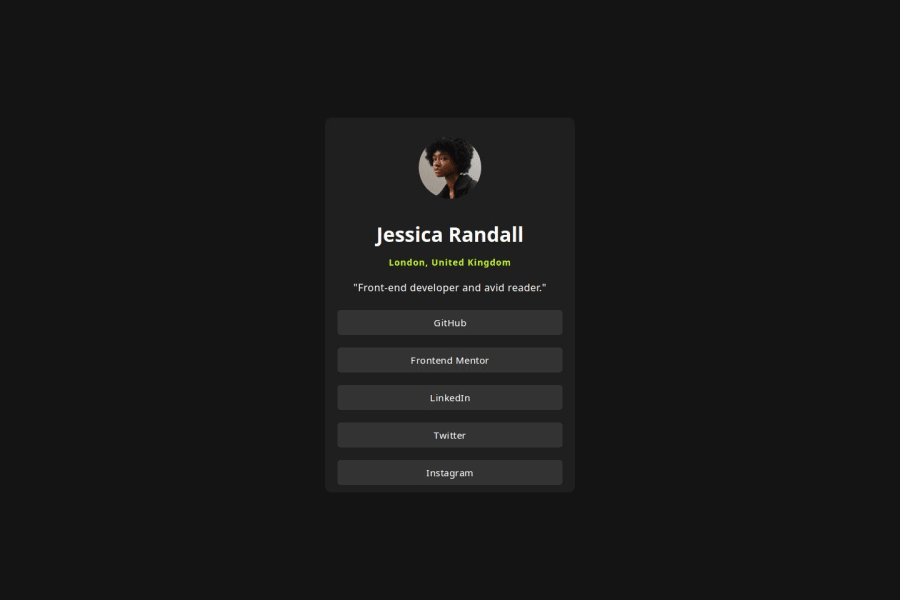
Design comparison
Please log in to post a comment
Log in with GitHubCommunity feedback
- @AdrianoEscarabote
Hey Ashishbauer, how’s it going? I was really impressed with your project’s result, though I have some advice that could be helpful:
To improve the semantics and accessibility of your code, consider using the
<ul>(unordered list) element to group related links. The<ul>tag is ideal for representing collections, such as a list of social media links or navigation items.Using
<ul>not only makes your code more structured and meaningful, but it also helps assistive technologies identify the group as a related set of items, enhancing the experience for screen reader users. Additionally, this approach improves overall readability and maintainability of your HTML.Example:
<ul> <li><a href="#">GitHub</a></li> <li><a href="#">Frontend Mentor</a></li> <li><a href="#">LinkedIn</a></li> <li><a href="#">Twitter</a></li> <li><a href="#">Instagram</a></li> </ul>In this example:
- The <ul> wraps the entire group, indicating that these links are related.
- Each item is enclosed in a <li> (list item), which provides a clear structure and logical grouping.
This method is particularly useful for navigation menus, social media links, or any set of grouped items, offering better support for both SEO and screen readers.
Pro Tip: Avoid using
<div>elements alone for lists, as they don’t convey the same semantic meaning. Whenever possible, choose semantic tags like<ul>or<ol>to improve the quality of your code.Everything else looks great.
Hope this helps! 👍
Marked as helpful - @gillaercio
The main part of the project is there, only the lateral spaces are missing to give it some breathing space.
But practice will certainly provide this care.
Congratulations on the project.
Marked as helpful
Join our Discord community
Join thousands of Frontend Mentor community members taking the challenges, sharing resources, helping each other, and chatting about all things front-end!
Join our Discord
